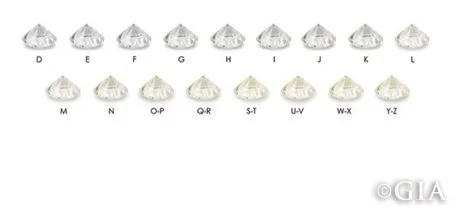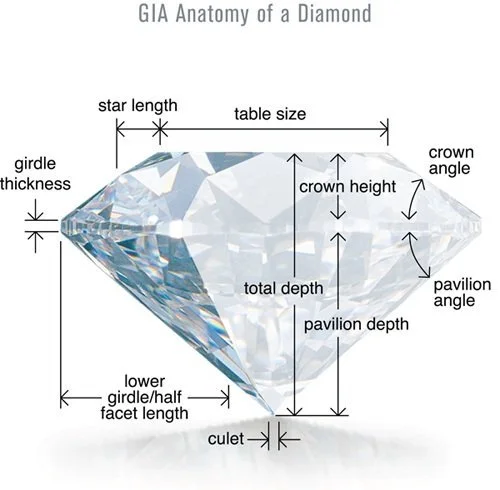Choosing Diamond Rings
Choosing a diamond ring can feel a bit of a minefield - what size stone to get, what do the 4 c’s actually mean, should my stone have a certificate etc etc etc?
We thought we’d pop together just a few pointers to help you. (Blog originally posted on our designer Erin Cox Jewellery’s page)
The 4c’s
The 4c’s stand for colour, clarity, cut and carat. Diamonds are graded agains these 4 areas.
1) Colour
For white diamonds (coloured diamonds are graded differently - thats for a different blog post!) a letter is applied for colour: from D being colourless to Z being light in colour. This goes in alphabetical order with D being the most desirable and purest in colour. A diamond of D quality would therefore be more expensive than a J for instance. The closer to Z you get the more yellow the stone will become (without being a natural fancy yellow diamond - again different grading)
2) Clarity
Clarity is to do with how many inclusions or flaws the stone has. This is graded from Flawless to I3 (The I standing for Included). In between there is SI (Slightly included), VS (Very slightly), VVS (Very very slightly) and Internally flawless. It is rare to get a stone which is flawless and these can be incredibly expensive. Again the clearer your stone is the more desirable it is so therefore more expensive.
You will often see the colour and clarity scale put together when talking about a stone. Erin believes in smaller but better quality when it comes to her stones so the diamonds she chooses to use are GVS2 or above as standard. Stones of a differing grade will be labelled as so. Stones at a VS level have “Inclusions (that) are observed with effort under 10x magnification, but can be characterized as minor” GIA.
3) Cut
The cut of the diamond really makes a difference to the life of the stone. The sparkle you see is because of 3 elements: brightness, fire and scintillation. We talk about the brightness which is the internal white light reflecting on the surface and the interior of the diamond, the fire is the colours that are emitted and the scintillation describes the pattern of light and dark ares and the overall sparkle. How the stone is cut greatly effects these elements. Some stones may have very wide girdles with shallow pavilions, others we may comment on being icebergs as they have a huge pavilion. The most desirable stones have fire proportions and symmetry. The scale goes from Poor to Excellent.
4) Carat Weight
When a diamond is measured in ‘carats’ it is referring to a measurement of weight. The cut of the diamond will effect how big a stone will look- for example a 0.5ct stone with a large spread but shallow depth will look larger than a 0.5ct diamond with a deep pavilion and arrow girdle.
As a rule of thumb stones which are exactly 1ct, 0.75ct, 0.5ct or 0.25ct will be more expensive than those which are just off. These are sought after sizes and so the price reflects that.
You will also sometimes see stones graded in points. Stones under 1ct are often referred to in points. Each carat is divided into 100 so a 0.75ct would be 75 points.
Certificates
We often have customers ask us if a stone is certificated. The term ‘diamond certificate’ is used a lot. However it is actually a ‘report’ rather than a certificate as it is based on professional opinion.
Generally stones under 1ct do not hold a report. We can obtain reports for stones upon request however this can be quite costly.
When looking at diamond reports it is important to ensure it has been conducted by a reputable independent institute. We recommend the GIA (Gemological institute of America) or IGI (International Gemological Institute).
The GIA have a huge amount of information about choosing diamonds. You can find their page here.
Do feel free to pop in to see us to look as some of the different diamonds we have in stock. We are always able to source diamonds of different qualities so feel free to enquire.
Above information image credits GIA




